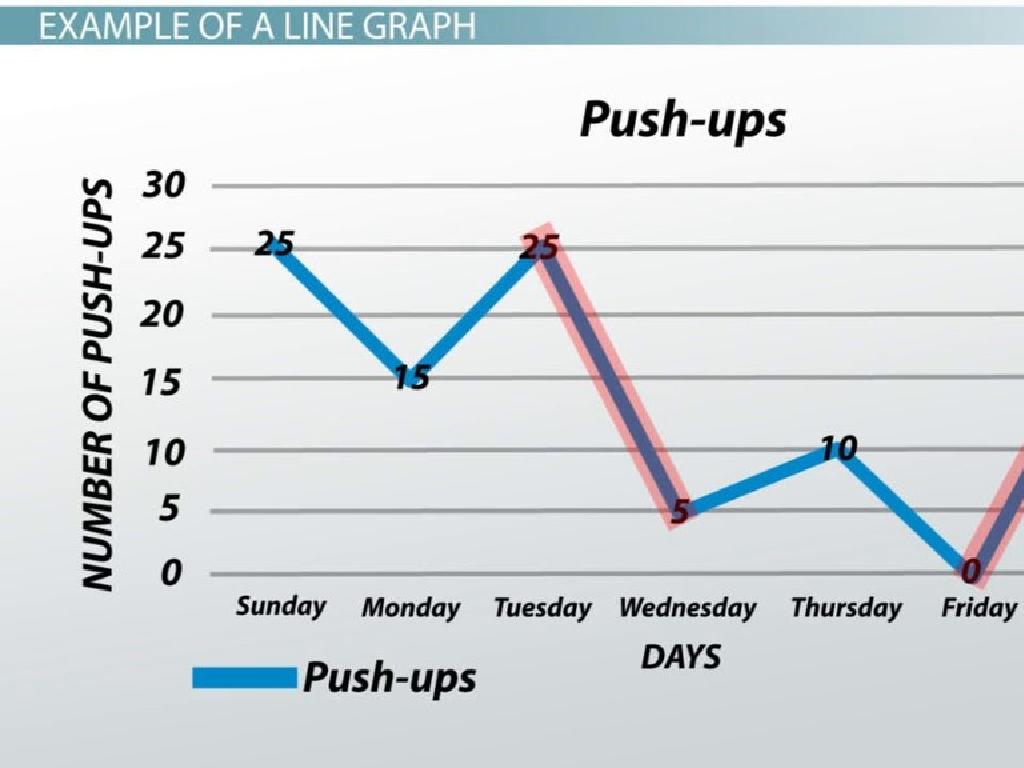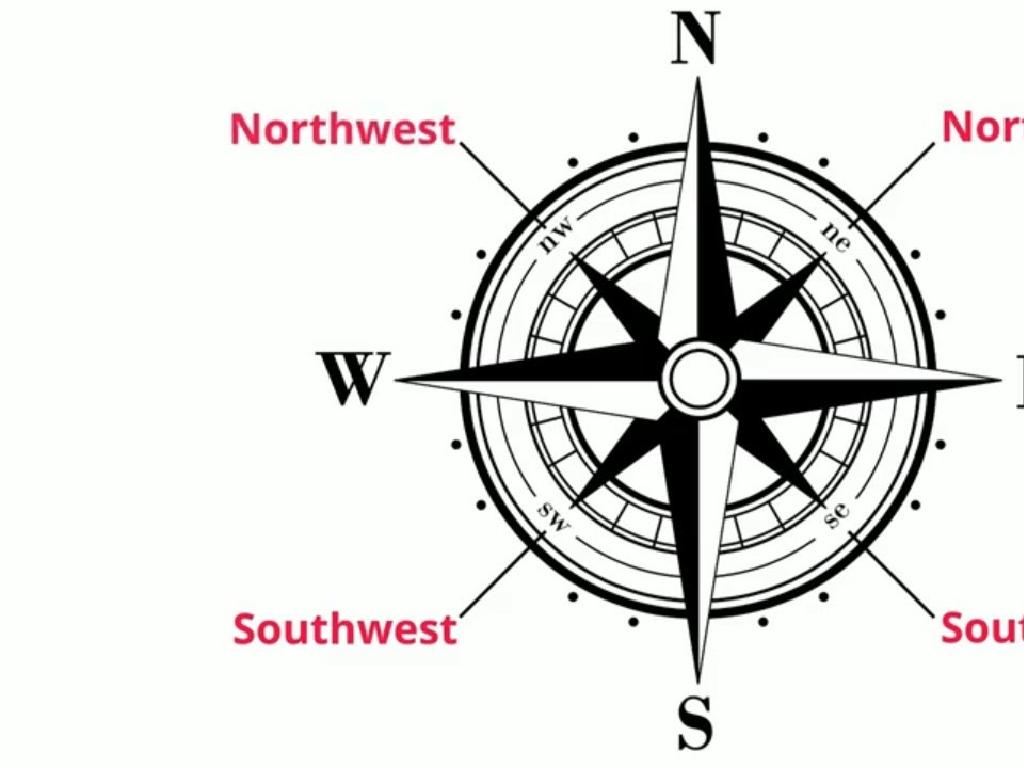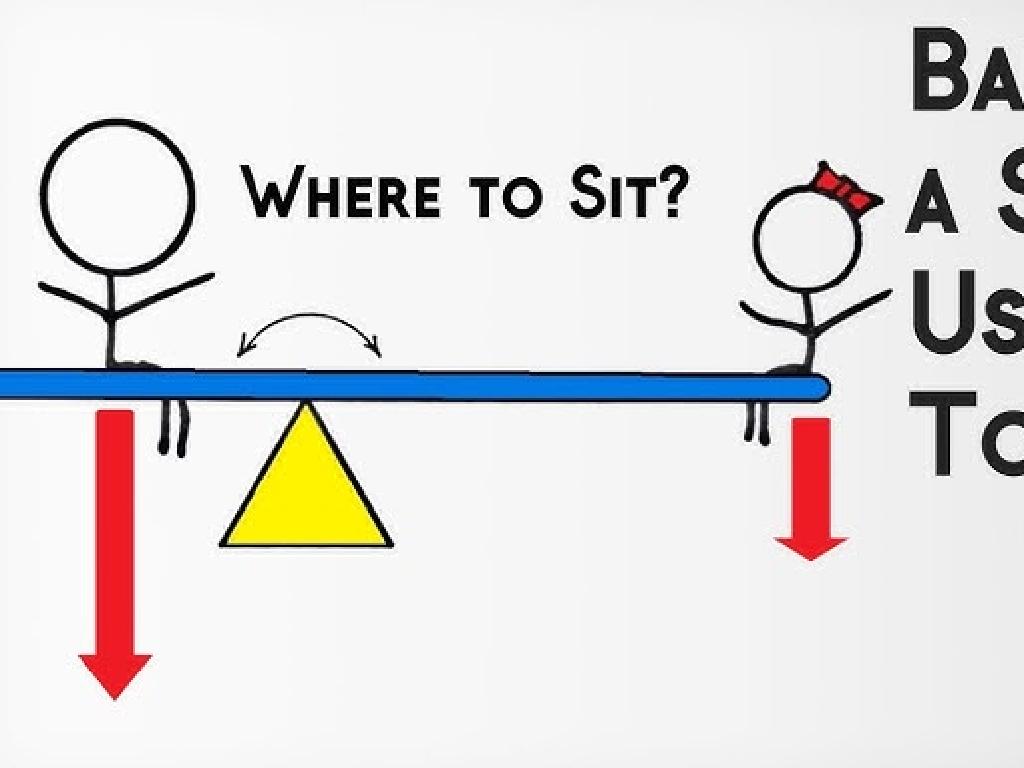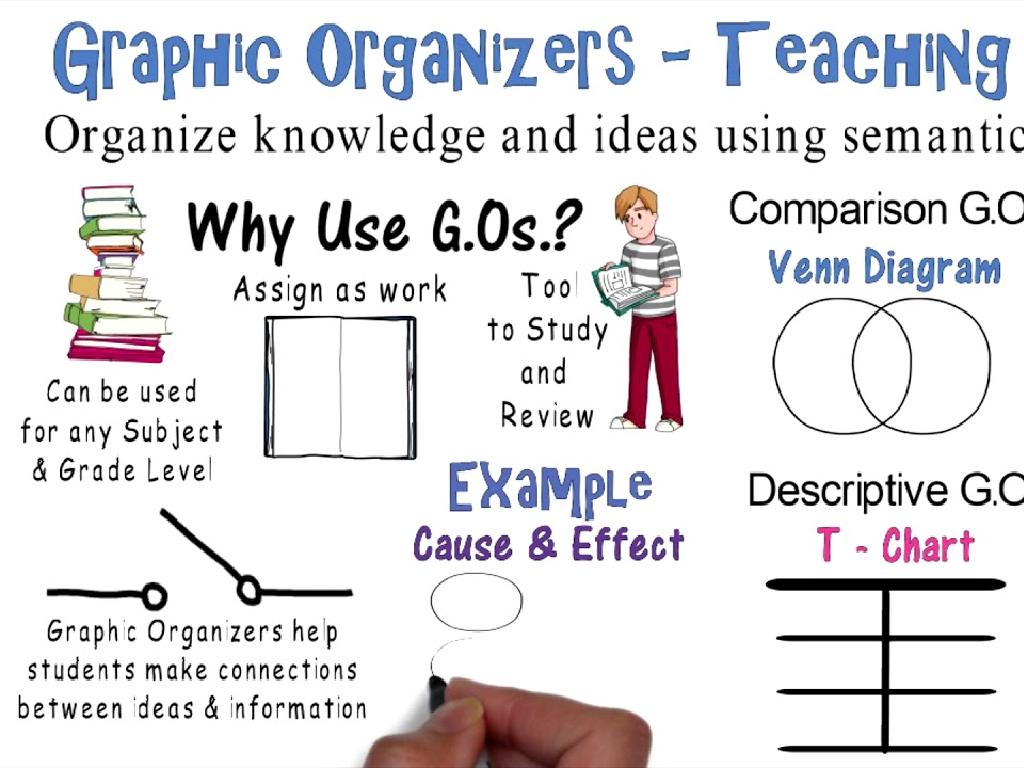Choose The Letter That You Hear: Lowercase
Subject: Language arts
Grade: First grade
Topic: Letter Identification
Please LOG IN to download the presentation. Access is available to registered users only.
View More Content
Welcome to Letter Sounds!
– Today’s fun game: Listen & Match
– Hear a sound, pick the letter
– When you hear a sound, think: what letter makes that sound?
– Letters build words we use
– Each letter has a unique sound that it makes
– Words are everywhere in our world
– Look around, words are on signs, books, and computers!
|
This slide introduces a listening game that helps students connect sounds to lowercase letters. The objective is to strengthen their phonemic awareness and letter identification skills. Start by playing a sound and asking students to choose the corresponding lowercase letter. Emphasize that letters are the building blocks of words and highlight the presence of words in the environment. Encourage students to be attentive and participate actively. For the activity, prepare a set of sounds that correspond to different letters and have a variety of letter cards available for students to choose from. You can differentiate the activity by using sounds that correspond to the beginning, middle, or end of words.
Learning Lowercase Letters
– What are lowercase letters?
– They are the small forms of letters
– When do we use lowercase?
– Used mostly in writing, except for names and start of sentences
– Spot the difference: A vs a
– Uppercase ‘A’ is big, lowercase ‘a’ is small
– Practice identifying lowercase
|
This slide introduces first graders to the concept of lowercase letters, which are the smaller versions of the alphabet that we use most often in writing. It’s important to highlight the visual difference between uppercase and lowercase letters, using ‘A’ and ‘a’ as a clear example. Encourage the students to practice identifying lowercase letters both in the classroom and at home. Activities can include letter tracing, alphabet puzzles, and finding lowercase letters in their favorite books. Reinforce the idea that uppercase letters are used for specific purposes, such as the beginning of sentences and proper nouns, while lowercase letters are the standard form used in most writing.
Listening to Letter Sounds
– Each letter has a unique sound
– A makes the sound ‘ah’ like in apple
– Use ears to hear letter sounds
– Close your eyes and listen carefully
– Recognizing sounds helps choose letters
– If you hear ‘tuh’, the letter is T
– Practice matching sounds to letters
– We’ll play a game to find the right letters!
|
This slide introduces the concept of phonemic awareness, where students learn to associate sounds with the corresponding lowercase letters. Emphasize the importance of careful listening and repetition in mastering this skill. Provide examples of each letter’s sound and encourage students to mimic the sounds. Plan a fun activity where you say a sound out loud and have the students write or choose the letter they believe matches the sound. This interactive approach will help reinforce their learning and make the connection between auditory recognition and visual representation of letters.
Matching Sounds to Letters
– Listen to the letter sound
– Match sound to the correct letter
– Example: Sound ‘sss’ matches ‘s’
– When you hear ‘sss’, think of the hissing snake and choose ‘s’
– Practice with sound ‘mmm’
– What letter looks like two mountains and sounds like ‘mmm’?
|
This slide is designed to help first graders associate sounds with their corresponding lowercase letters. Start by making a letter sound and asking students to identify the letter. Use the example of ‘sss’ to show them how to connect the sound to the letter ‘s’. Then, practice with the sound ‘mmm’ and guide them to choose the letter ‘m’. Encourage the students to think of the sound and shape of the letter. For instance, ‘mmm’ can be associated with the shape of the letter ‘m’ resembling two mountains. This visual and auditory association will help reinforce their understanding. During the activity, walk around the classroom to assist students who may struggle and provide positive reinforcement to those who identify the letters correctly.
Practice Time: Listen and Choose the Letter
– Listen carefully to the sound
– Hold up the matching lowercase letter
– When you hear the sound, think of the letter that makes that sound.
– Think about the letter shapes
– Lowercase letters might look different from uppercase ones.
– Remember, only lowercase letters!
|
This slide is for an interactive classroom activity designed to help first graders identify lowercase letters by their sounds. The teacher will articulate a sound, and the students will respond by holding up the corresponding lowercase letter. It’s important to remind the students to focus on lowercase letters only, as they can be easily confused with their uppercase counterparts. The teacher should prepare a set of common sounds and ensure that each student has a set of lowercase letter cards to hold up. The activity can be made more engaging by including a variety of sounds and praising correct matches to encourage participation.
Sound Detective Game
– Play ‘Sound Detective’
– Listen to the sound carefully
– What letter does the sound start with?
– Find the lowercase letter
– Match the sound to the letter on your board
– Earn points for correct letters
– Keep track of points for each correct match
|
This interactive game is designed to help first graders recognize and identify lowercase letters by their sounds. As the teacher, you will play a sound, and students will search for the corresponding lowercase letter on their game boards. This activity encourages active listening and quick thinking. To prepare, ensure each student has a game board with the alphabet in lowercase. Play a variety of letter sounds and guide students to find the correct letters. Celebrate correct answers with points to motivate participation. This game enhances phonemic awareness and letter-sound association, which are crucial for reading development. Have a few variations of the game ready, such as playing sounds in quick succession for a lightning round or giving bonus points for consecutive correct answers.
Class Activity: Letter Bingo
– We’re playing ‘Letter Bingo’ today
– Listen for the letter sounds
– When you hear ‘a’ as in ‘apple’, find ‘a’ on your card
– Mark the letter on your bingo card
– Shout ‘Bingo!’ for five in a row
– Get ready to shout when you have 5 marked letters in a line!
|
This interactive ‘Letter Bingo’ game is designed to help first graders recognize and identify lowercase letters by their sounds. Distribute bingo cards with a random arrangement of lowercase letters to each student. Play sounds of letters and prompt students to mark the corresponding letter on their cards. The first student to have five marked letters in a row (horizontally, vertically, or diagonally) should shout ‘Bingo!’ and win the game. This activity reinforces auditory discrimination of letter sounds and visual identification of lowercase letters. It’s also a fun way to encourage active participation. Prepare variations of the game with different bingo cards, and consider small rewards for winners to keep the activity engaging.
Great Listening Today!
– Super work finding letters!
– Practice letter sounds daily
– Sounds link to reading skills
– Listen for letters everywhere
– Hear them at home, school, outside
– Reading gets easier with practice
|
Congratulations to the students for their hard work during the lesson. Emphasize the importance of continuous practice in mastering letter sounds, which is a fundamental skill for reading. Encourage them to be attentive to the sounds of letters in different environments, not just in the classroom. This will help them to connect the sounds to the letters and improve their reading fluency. Reinforce the idea that learning is a journey, and every bit of practice contributes to their growth as readers.






